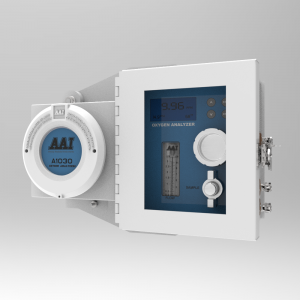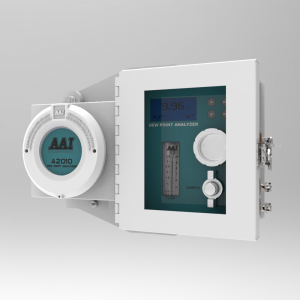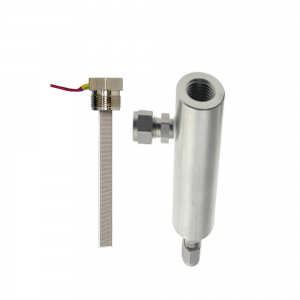Measuring cells
Phosphorus pentoxide (P₂O₅) has a great desire to absorb water in order to change into tetrametaphosphoric acid. It is an extremely hygroscopic salt. This makes it ideal for setting up a moisture-sensitive sensor. The process goes back to the KEIDEL measuring cell developed in 1956. In contrast to this, the sensitive layer of our Sensor is applied on the outside, together with two electrodes. At these a decomposition voltage is present greater than 12V. This converts the metaphosphoric acid into hydrogen and oxygen and thus releases phosphorus pentoxide again. Theoretically, the P₂O₅ is not used up. The measuring of the resulting electrolysis current is a directly value of the moisture (Farady’s law).
The cell contains a ceramic strip with printed platinum electrodes. They are coated with a hygroscopic layer made of Phosphorus Pentoxide (P2O5) which attracts the water. In electrolytic cells the electric current is strictly proportional to the number of dissociated water molecules per time unit. This is an absolute measurement and requires no calibration.
While a sample gas streams through the cell at a typical rate of 100 ml/min, the current is measured with the acquisition box. This sensing technique is able to find single water molecules among a million gas molecules (ppm range). A water content of 1 ppmV (parts per million of the volume) corresponds to 13.2 µA.



